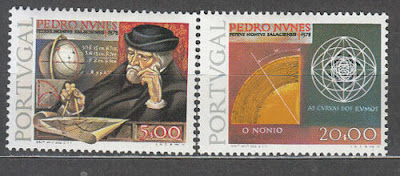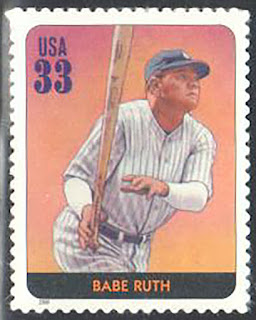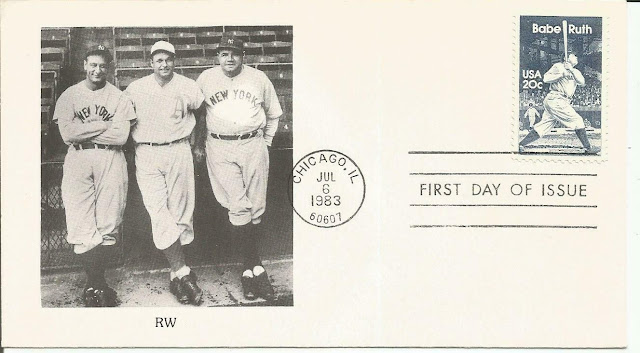Here are some events that happened on August 11th. It could be an event or a person that died or was born on that day
1578 Died: Pedro Nunes, Portuguese mathematician and academic (b. 1502)
Pedro Nunes (1502 – 11 August 1578) was a Portuguese mathematician, cosmographer, and professor, from a New Christian (of Jewish origin) family.
Considered one of the greatest mathematicians of his time Nunes is best known for his contributions to the nautical sciences (navigation and cartography), which he approached, for the first time, in a mathematical way. He was the first to propose the idea of a loxodrome, and was the inventor of several measuring devices, including the nonius (from which Vernier scale was derived), named after his Latin surname.
Pedro Nunes lived in a transition period, during which science was changing from valuing theoretical knowledge (which defined the main role of a scientist/mathematician as commenting on previous authors), to providing experimental data, both as a source of information and as a method of confirming theories. Nunes was, above all, one of the last great commentators, as is shown by his first published work “Tratado da Esfera”, enriched with comments and additions that denote a profound knowledge of the difficult cosmography of the period. He also acknowledged the value of experimentation.
In his Tratado da sphera he argued for a common and universal diffusion of knowledge. Accordingly, he not only published works in Latin, at that time science's lingua franca, aiming for an audience of European scholars, but also in Portuguese, and Spanish (Livro de Algebra).
Navigation
Much of Nunes' work related to navigation. He was the first to understand why a ship maintaining a steady course would not travel along a great circle, the shortest path between two points on Earth, but would instead follow a spiral course, called a loxodrome. The later invention of logarithms allowed Leibniz to establish algebraic equations for the loxodrome. These lines —also called rhumb lines— maintain a fixed angle with the meridians. In other words, loxodromic curves are directly related to the construction of the Nunes connection —also called navigator connection.
In his Treaty defending the sea chart, Nunes argued that a nautical chart should have its parallels and meridians shown as straight lines. Yet he was unsure how to solve the problems that this caused: a situation that lasted until Mercator developed the projection bearing his name. The Mercator Projection is the system which is still used.
Geometry
Nunes also solved the problem of finding the day with the shortest twilight duration, for any given position, and its duration. This problem per se is not greatly important, yet it shows the geometric genius of Nunes as it was a problem which was independently tackled by Johann and Jakob Bernoulli more than a century later with less success. They could find a solution to the problem of the shortest day, but failed to determine its duration, possibly because they got lost in the details of differential calculus which, at that time, had only recently been developed. The achievement also shows that Nunes was a pioneer in solving maxima and minima problems, which became a common requirement only in the next century using differential calculus.
Stamps and cover issued by Portugal to commemorate Pedro Nunes
1911 Died: Andrew Carnegie, Scottish-American businessman and philanthropist (b. 1835)
Andrew Carnegie (November 25, 1835 – August 11, 1919) was a Scottish-American industrialist and philanthropist. Carnegie led the expansion of the American steel industry in the late 19th century and became one of the richest Americans in history. He became a leading philanthropist in the United States and in the British Empire. During the last 18 years of his life, he gave away $350 million (conservatively $65 billion in 2019 dollars, based on percentage of GDP) to charities, foundations, and universities – almost 90 percent of his fortune. His 1889 article proclaiming "The Gospel of Wealth" called on the rich to use their wealth to improve society, and stimulated a wave of philanthropy.
Carnegie was born in Dunfermline, Scotland, and emigrated to the United States with his parents in 1848 at age 12. Carnegie started work as a telegrapher, and by the 1860s had investments in railroads, railroad sleeping cars, bridges, and oil derricks. He accumulated further wealth as a bond salesman, raising money for American enterprise in Europe. He built Pittsburgh's Carnegie Steel Company, which he sold to J. P. Morgan in 1901 for $303,450,000. It became the U.S. Steel Corporation. After selling Carnegie Steel, he surpassed John D. Rockefeller as the richest American for the next several years.
Carnegie devoted the remainder of his life to large-scale philanthropy, with special emphasis on local libraries, world peace, education, and scientific research. With the fortune he made from business, he built Carnegie Hall in New York, NY, and the Peace Palace and founded the Carnegie Corporation of New York, Carnegie Endowment for International Peace, Carnegie Institution for Science, Carnegie Trust for the Universities of Scotland, Carnegie Hero Fund, Carnegie Mellon University, and the Carnegie Museums of Pittsburgh, among others.
US stamp depicting Carnegie
1929 – Babe Ruth becomes the first baseball player to hit 500 home runs in his career with a home run at League Park in Cleveland, Ohio.
George Herman "Babe" Ruth Jr. (February 6, 1895 – August 16, 1948) was an American professional baseball player whose career in Major League Baseball (MLB) spanned 22 seasons, from 1914 through 1935. Nicknamed "The Bambino" and "The Sultan of Swat", he began his MLB career as a star left-handed pitcher for the Boston Red Sox, but achieved his greatest fame as a slugging outfielder for the New York Yankees. Ruth established many MLB batting (and some pitching) records, including career home runs (714), runs batted in (RBIs) (2,213), bases on balls (2,062), slugging percentage (.690), and on-base plus slugging (OPS) (1.164); the last two still stand as of 2019. Ruth is regarded as one of the greatest sports heroes in American culture and is considered by many to be the greatest baseball player of all time. In 1936, Ruth was elected into the Baseball Hall of Fame as one of its "first five" inaugural members.
At age seven, Ruth was sent to St. Mary's Industrial School for Boys, a reformatory where he was mentored by Brother Matthias Boutlier of the Xaverian Brothers, the school's disciplinarian and a capable baseball player. In 1914, Ruth was signed to play minor-league baseball for the Baltimore Orioles but was soon sold to the Red Sox. By 1916, he had built a reputation as an outstanding pitcher who sometimes hit long home runs, a feat unusual for any player in the pre-1920 dead-ball era. Although Ruth twice won 23 games in a season as a pitcher and was a member of three World Series championship teams with the Red Sox, he wanted to play every day and was allowed to convert to an outfielder. With regular playing time, he broke the MLB single-season home run record in 1919.
After that season, Red Sox owner Harry Frazee sold Ruth to the Yankees amid controversy. The trade fueled Boston's subsequent 86-year championship drought and popularized the "Curse of the Bambino" superstition. In his 15 years with the Yankees, Ruth helped the team win seven American League (AL) pennants and four World Series championships. His big swing led to escalating home run totals that not only drew fans to the ballpark and boosted the sport's popularity but also helped usher in baseball's live-ball era, which evolved from a low-scoring game of strategy to a sport where the home run was a major factor. As part of the Yankees' vaunted "Murderers' Row" lineup of 1927, Ruth hit 60 home runs, which extended his MLB single-season record by a single home run. Ruth's last season with the Yankees was 1934; he retired from the game the following year, after a short stint with the Boston Braves. During his career, Ruth led the AL in home runs during a season 12 times.
During Ruth's career, he was the target of intense press and public attention for his baseball exploits and off-field penchants for drinking and womanizing. After his retirement as a player, he was denied the opportunity to manage a major league club, most likely due to poor behavior during parts of his playing career. In his final years, Ruth made many public appearances, especially in support of American efforts in World War II. In 1946, he became ill with nasopharyngeal cancer and died from the disease two years later. Ruth remains a part of American culture, and in 2018 President Donald Trump posthumously awarded him the Presidential Medal of Freedom.








No comments:
Post a Comment